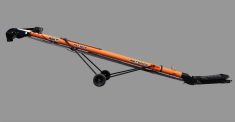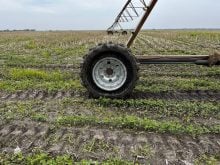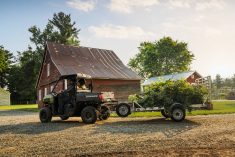The used farm equipment market has tightened up considerably so far in 2024 compared to the high it was riding on in the past few years. Some equipment types are being affected more than others.
“On those specialized once-a-season assets, people are very selective with what they buy and from where,” says Jordan Clarke, senior vice-president and head of sales for Canada at Ritchie Bros. Auctioneers “Tractors, being a multi-use piece of equipment, they just survive the impact a little better. There are less ups and downs.”
Among those once-a-season machines affected are air drills, which have seen a change in buyer preferences. Previously, large capacity was a main driver of demand. Now age, digital technology and advanced features are prime considerations for pulling in the highest prices, even if the working widths are narrower.
Read Also

Claas brings 1000 Series SP forage harvesters to Canada
In mid-August, Claas unveiled its new line of Jaguar forage harvesters at an event in Visalia, California, deep in the heart of that state’s dairy region.
“With air drills, there are some one-, two- and three-year (-old) air drills that are selling as well if not better than they did last year,” says Clarke. “But the 10, 15, 20 (-year-old), the bottom has fallen out of that age group.”
Combines, too, are feeling less love from buyers.
“Combines that are five to 12 years old and eight to 15, they tend to be the largest categories we sell and there’s been a bigger separation in price this year versus last year.” he says. “And there’s more of them in the marketplace too.”
Tractor sale prices have declined roughly five per cent across the horsepower range.
“Tractors are still popular,” he says. “Saying that, there has been a drop, even in tractors. They’re probably the most consistent. I’d say a drop of five per cent across the board. Sprayers seem to be one of the least affected.
“I think really when times tighten up a bit, people are much more selective. That’s the term I would use. Bidding has been selective versus the past three or four years.”
















